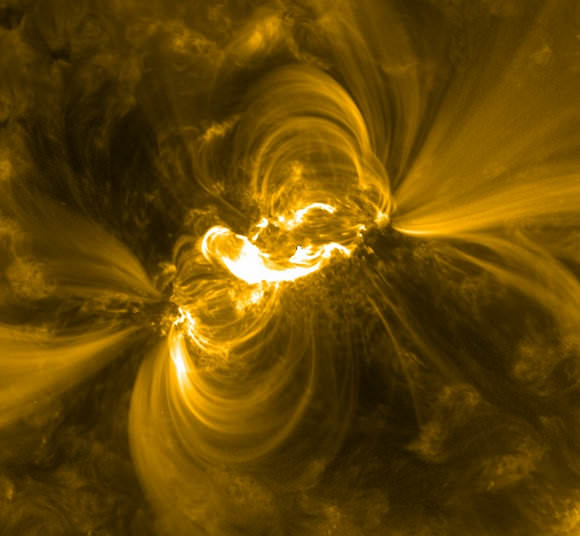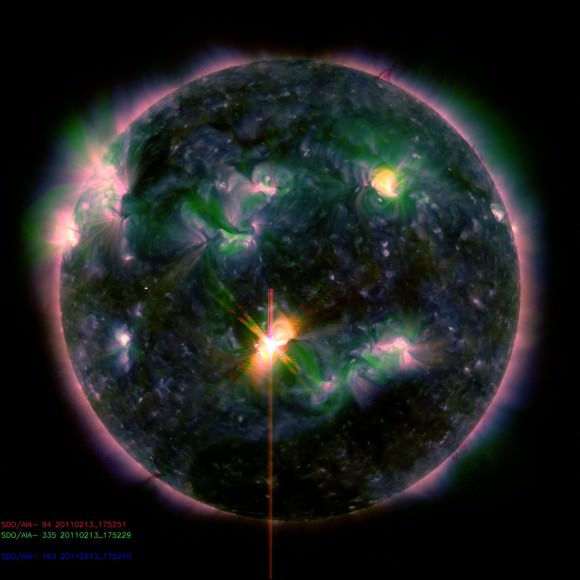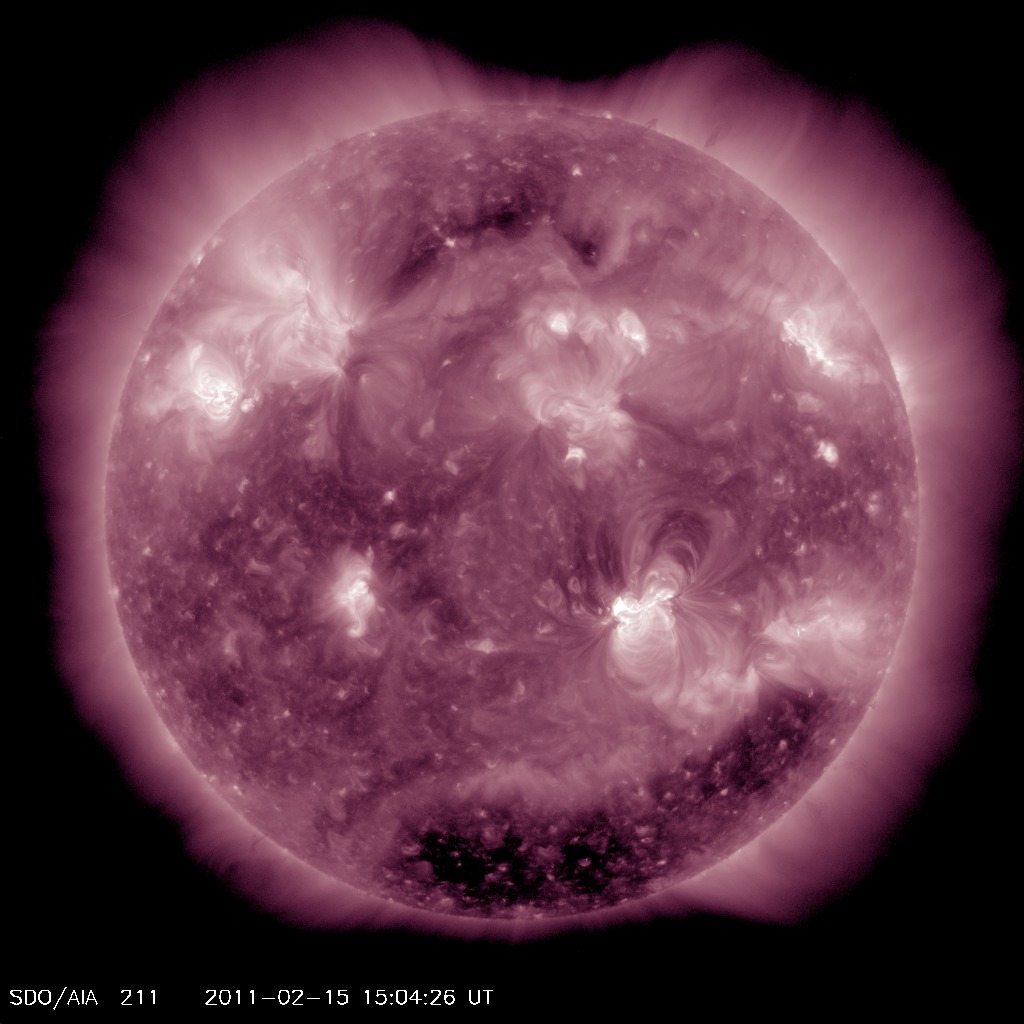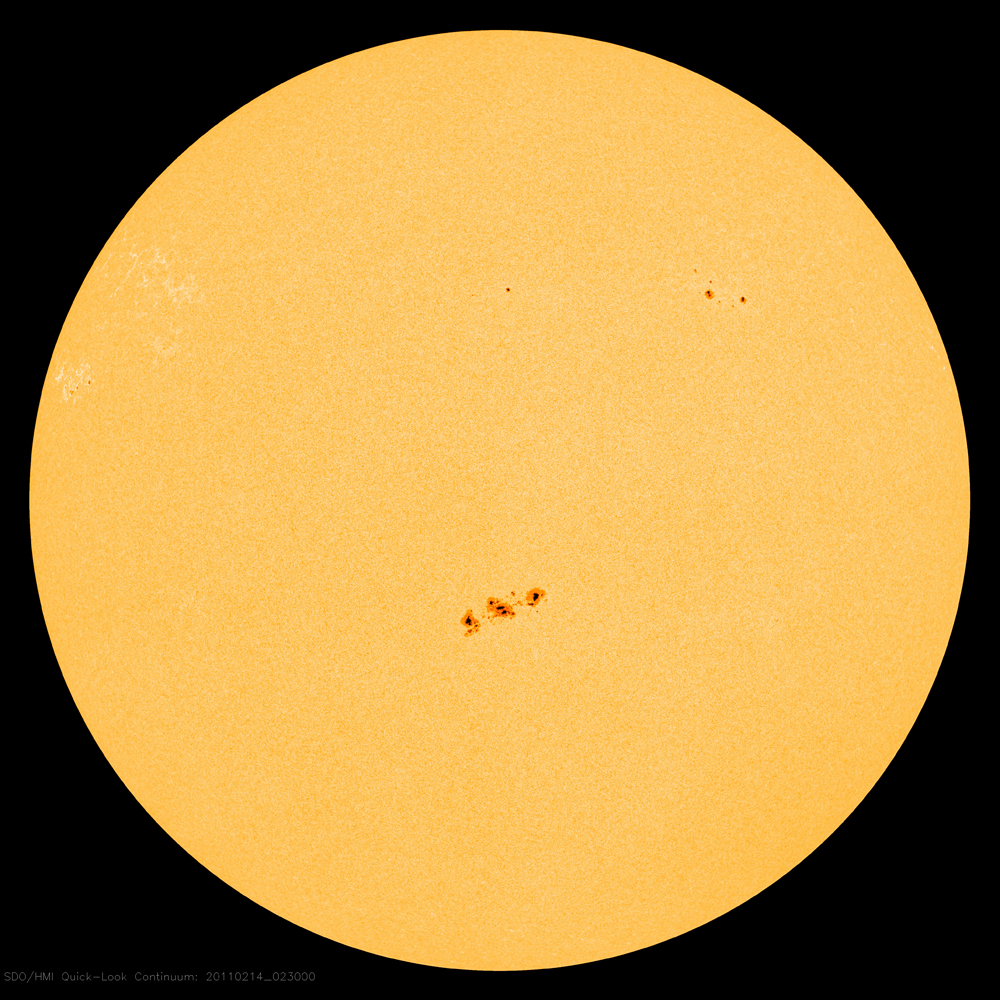When the
largest flare in four years erupted from the sun Feb. 14, sky watchers across the Northern Hemisphere braced themselves for a geomagnetic storm. Space weather experts predicted that jets of charged particles smacking into the Earth’s magnetic field could disrupt navigation and communication systems, and spark a bonus of bright northern lights dancing across the ionosphere.
Instead, nothing much happened.
“There were some
nice displays of aurora, but you had to live in Finland, northern Canada or Alaska to see them,” said Joe Kunches, a forecaster at the National Oceanic and Atmospheric Administration’s
Space Weather Prediction Center. “This one was the lowest storm category that we even pay any attention to.”
The storm was so weak because the flare’s magnetic field happened to be aligned parallel to the Earth’s. When the sun sends a mass of hot plasma hurtling toward the planet in a
coronal mass ejection, the plasma is imprinted with its own magnetic field separate from the sun’s. Astronomers can’t predict the direction of the plasma’s magnetic field until the burst hits Earth.
If the plasma’s magnetic field is parallel to the Earth’s, the incoming charged particles are effectively blocked from entering Earth’s magnetosphere. An identical flare with a perpendicular magnetic field would have triggered a much stronger storm.
“If the magnetic fields are parallel, then the shields are up. We are well protected,” said space weather expert Juha-Pekka Luntama of the European Space Agency Feb. 19 at the meeting of the American Association for the Advancement of Science in Washington, DC.
But next time we might not be as lucky with alignment, and we can expect up to 1,700 more storms like last week’s in the coming months as the sun wakes back up.
NOAA ranks geomagnetic storms on a
scale from G1, minor storms that spark auroras in Michigan and Maine, to G5, extreme storms that can shut down power grids and cause northern lights as far south as Florida. The ranking is based on how much more active the local magnetic field is than a normal, quiet day.
The Feb. 14 storm turned out to be a G1, meaning “it wasn’t that big a deal,” Kunches said.
The storm was mostly notable for being the first of the new solar cycle, Kunches said. The sun goes through periods of relative violence and calm every 11 years or so. This last solar minimum was longer and quieter than astronomers expected. Many predict that the ensuing solar maximum, when magnetic activity on the sun will cause more frequent and severe flares, will also be relatively serene.
But space-weather experts are more nervous about this solar maximum than ever before. Since the last solar maximum in 2000, society has grown more dependent on systems that can be knocked out by a strong solar flare.
“Things have changed a lot since 2000,” Tom Bogdan, director of NOAA’s Space Weather Prediction Center, told reporters Feb. 19 at AAAS. “What’s at stake are the advanced technologies that underlie our lives.”
A strong flare would send ultraviolet and X-ray radiation to the sunlit side of the Earth, ionizing the upper atmosphere and potentially shutting down GPS satellites. Losing GPS would cause chaos in more than just car navigation systems, Bogdan said.
“GPS is involved in everything we do,” he said, including financial transactions. Prices fluctuate so quickly that traders need a time stamp accurate to a millionth of a second every time they buy or sell something. Every time you swipe your credit card at the gas station or buy a bag of oranges, Bogdan said, it goes through a GPS satellite.
Ten to 20 minutes after the flare, a burst of high-energy protons would enter the Earth’s magnetic field at the poles, causing processing errors in other satellites.
About half an hour later, the hot cloud of plasma that the sun spit out with the flare would bump into the Earth’s magnetic field. If it’s strong enough, the plasma’s magnetic field can induce currents in electric transmission lines, which could cause widespread blackouts. The most powerful solar flare in recorded history, the
Carrington flare in September 1859, sent currents through telegraph wires and even set a few buildings on fire.
Bogdan noted that that storm and the next-strongest storm in 1921 both happened during particularly weak solar cycles.
Still, he said, “don’t panic.” Many satellites and transmission lines are already fitted with shields to prevent the worst of the damage from a strong flare. Others can be shut down preemptively. Sun-observing satellites give space weather experts about 20 hours to come up with a plan to deal with an impending storm, during which NOAA sends out detailed alerts.
“This recent solar flare really illustrates that we need to pay attention to space weather,” said NOAA administrator Jane Lubchenco at the AAAS meeting. “The watchword is, predict and prepare.”
Interested sky watchers can
sign up to receive space-weather alerts on their phones, and watch for more flares in the next two years. NOAA predicts 100 storms that will spark auroras as far south as Alabama.
Image: NASA/Solar Dynamics Observatory




